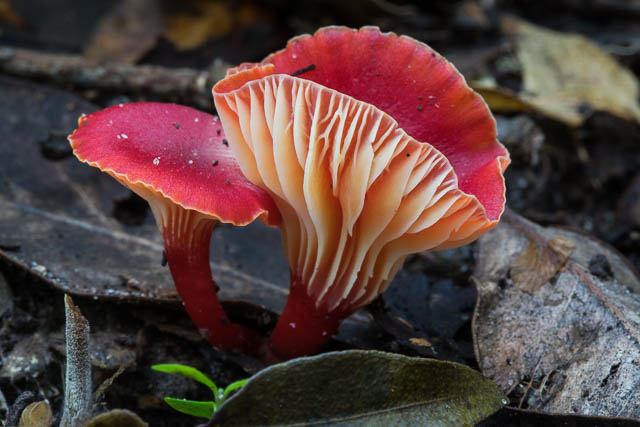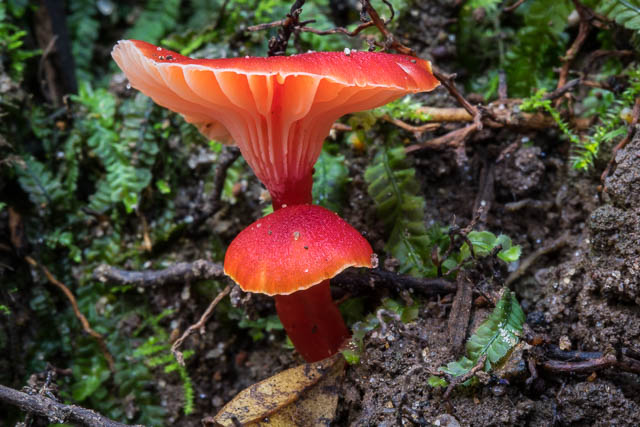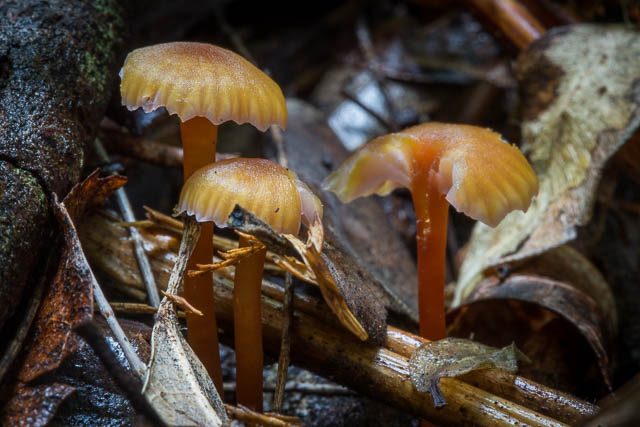After Sassafras Gully, my next fungi trip was to the Lane Cove area again to see how things were going there.
I found a lot of fresh fungi out, and I was also very fortunate to bump into Ray and Elma Kearney doing a fungi survey. They took time out to show me some of the interesting hygrocybes that were out and also explained what species they were. I say “explained” rather than “told” because with hygrocybes and red hygrocybes in particular, it is very difficult to identify them. You need to carefully look at the colour of the caps, how rough the caps are, how vicid, the gill shape and colour, the edge or the cap, the shape and colours of the stipe etc. A lot of features can give you some pointers. However, you also need to be aware that a particular fungi will change both shape and colour as it ages or dries out.
So on this visit, I was able to get some very reliable id’s and also was able to photograph a range of variations in particular species.
Here are some photos of the hygrocybes –
I also found a few other interesting fungi out –
More photos are on my website here.



















Dear Dave
Some years ago my son found an object that looked like a light (in weight) round dark brown stone. it is 60mm x 50mm x 40mm. It is partly mottled with light brown patches. He took it to the Qld Museum for identification and they told him that it was a rare fungus fruit. But gave it no name. Would you know what it might be?
W are keen to know more about it.
Thank you.
Judith.
A “fungus fruit” means the fruiting body – which can be a mushroom, or a puffball or a stinkhorn, or a cup or club etc. So to work out what you son saw is very difficult without at least a photo. If it was round and looked like a stone – then it may have been an “egg” that a stinkhorn emerges from, or a truffle type fungi, or even a mushroom type fungi – before it has opened up.